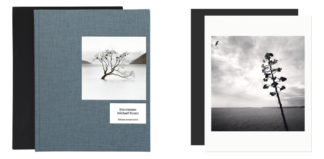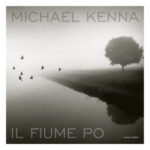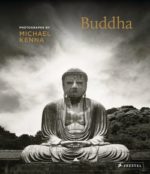« Pendant plus de quinze ans, Michael Kenna, photographe anglais mondialement connu pour ses paysages en noir en blanc abstraits et ouatés, a documenté les anciens camps nazis. Ce travail, le photographe a souhaité le transmettre et en 2000, il a fait don à la France d’un ensemble de 301 négatifs et tirages conservés aujourd’hui à la Médiathèque de l’Architecture et du Patrimoine. Ce projet est né, de la rencontre de l’intimité directe avec l’événement. Pendant ses études, Michael Kenna voit l’image d’une montagne de blaireaux de rasage, prise par un autre étudiant à Auschwitz-Birkenau. La photo l’impressionne, les blaireaux de rasage lui faisant penser à son propre père. C’est après la visite de l’ancien camp de Natzweiler-Struthof, en France, qu’il décide de commencer ce travail.
En quinze ans, il visite les camps en Allemagne, Pologne, France et Italie pour en photographier paysages et détails : les entrées de camps, avec les célèbres portes de la mort à Auschwitz, celles de Natzweiler-Struthof ou de Buchenwald, le monument mémoriel de Plaszow, les clôtures, miradors, bâtiments, routes, panneaux et végétation, les crânes, ossements, vestiges humains, wagons, crématoriums, le bassin de cendres de Birkenau… Il se place également au milieu de ce parcours, en photographiant son ombre sur la route, à Chelmno, en Pologne et en photographiant lui aussi les blaireaux à Auschwitz Birkenau, bouclant la boucle de sa propre histoire. » – Réponses Photo
Michael Kenna’s work around Nazi camps comes from his school years. He is a photographer born in Widnes, England, in 1953. While working in the Banbury Art School communal darkroom, he experienced a photograph of the Auschwitz-Birkenau camp taken by another student, that of a mountain of shaving brushes.
Michael undertook for more than 15 years, at his own expense, numerous trips to photograph the remains of the Nazi camps, which at the time were abandoned, all over Europe. In 2001, through the Patrimoine photographique, Michael Kenna donated to France 301 original photographic prints made of Nazi prisons, concentration camps and killing centers, along with the original negatives. Michael Kenna gave the rights of universal transmission for the purposes of memory. He also decided that this work may not be subject to any commercialization. Between 2011 and 2021, continuing the process, he dontated the remaining work prints, negatives and original prints resulting from this memorial work to the Museum of National Resistance (MRN) of Champigny-sur-Marne. This presents no less than 6,385 negatives, 6,472 contact prints, 1,644 work prints and 261 exhibition prints.
The image is also an object memory. Because he is a landscape photographer, Michael Kenna photographs the sites of the camps, making light emerge from the shadows. He approaches history and culture in a different way, focusing on the memory of the concentration camp universe and of the genocide of the Jews of Europe. Looking at these places, he reminds us that the Nazi camps have today become vestiges which only partially account for their functioning during the Second World War. At a time when the survivors and witnesses of the Deportation are becoming increasingly rare, he decided to help the transmission of this memory, using the art that he masters, that of photography. To offer a different look at these places, where the Nazis tried to destroy our humanity, was to help make oblivion possible.
















